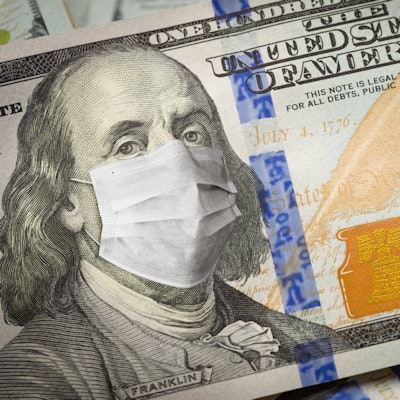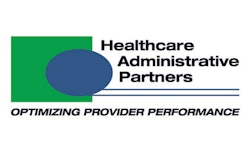
Physicians and other healthcare providers were able to apply for additional grant funds from the U.S. Department of Health and Human Services (HHS) beginning on September 29, 2021. This distribution of funds is known as phase IV of the Provider Relief Fund (PRF) authorized by the CARES Act of 2020 in response to the COVID-19 public health emergency.
 Rebecca Farrington.
Rebecca Farrington.Additional funds will be available under the American Rescue Plan (ARP) for providers who serve rural patients. Both aspects of the current distribution will be available through a single application process.
PRF phase IV distribution
The phase IV distribution will be based on a provider's changes in operating revenues and expenses from July 1, 2020, to March 31, 2021. However, the funds may be used to replace revenue lost and/or expenses incurred during the three-year period from January 1, 2020, to December 31, 2022. Providers are eligible to apply if they bill Medicare (both traditional and Advantage), Medicaid and/or CHIP, and whether they have previously received any PRF grants or not. The application period ends at midnight on October 26, 2021.
HHS will determine the amount of the base payments and supplements after analyzing data from all the applications received to ensure that they stay within their budget and that funds are distributed equitably. HRSA expects that the phase IV payments will be distributed in mid to late December 2021. According to the Health Resources and Services Administration (HRSA) web site, the funds will be allocated so that:
- Large providers will receive a minimum payment amount that is based on a percentage of their changes in operating revenues and expenses.
- Medium and small providers will receive a base payment plus a supplement, with small providers receiving the highest supplement, as smaller providers tend to operate on thin margins and often serve vulnerable or isolated communities.
- Bonus payments will be based on the amount and type of services provided to Medicaid, CHIP, and Medicare patients. HHS will price Medicaid and CHIP claims data at Medicare rates, with some limited exceptions for some services provided predominantly in Medicaid and CHIP.
ARP rural distribution
Providers serving patients who live in rural communities are eligible to apply for funds under this portion of the distribution program. The payment will be based on the amount and type of Medicare, Medicaid, and CHIP services provided to rural patients during the period from January 1, 2019, to September 30, 2020.
Just as with the phase IV payments, HHS will determine the amount of the payments after analyzing data from all the applications received to ensure that they stay within their budget and that funds are distributed equitably. HRSA expects that the ARP rural payments will be distributed in late November 2021.
It is significant to note here that ARP rural payments will be determined based on the location of the patients, not the provider. Applicants do not need to verify whether their patients live in an area that meets the definition of rural; HRSA will base payments on data already available to it using the Federal Office of Rural Health Policy definition of rural. HRSA has stated that there is no penalty for applying in any case.
According to the HRSA web site, Medicaid and CHIP claims data will be priced at Medicare rates, with some limited exceptions for some services provided predominantly in Medicaid and CHIP. Providers who serve any patients living in Federal Office of Rural Health Policy-defined rural areas with Medicaid, CHIP, or Medicare coverage, and who otherwise meet the eligibility criteria, will receive a minimum payment.
How and when to apply
Both programs may be applied for in a single application, and HRSA will use existing Medicaid, CHIP, and Medicare claims data in calculating portions of the payments. The application will be available on the HRSA PRF Application and Attestation Portal from September 29 through October 26, 2021. This is the same portal that was used to apply for previous phases of the PRF distributions and for reporting on the use of those funds. If you have not already created an account on the portal, a separate registration process is first required.
Waiting until the last minute to file the application is not recommended; begin the application relatively soon even if you don't plan to finalize it until closer to the deadline. The first step (taxpayer ID validation) can take up to four business days, even if the practice has previously used the portal for application and/or attestation of a PRF grant.
Also, some time should be reserved in case you do not have all the requested data on hand while working through the application. Practices that received a grant under phase III must attest to the receipt, terms, and conditions of that grant before moving on to the phase IV application.
HRSA says that the information needed to complete the application is as follows:
- Taxpayer ID number (TIN) for the practice and any subsidiaries
- Financial statements that substantiate operating revenue and expense from patient care in 2019 (quarters 1, 3, and 4), 2020 (quarters 3 and 4) and 2021 (quarter 1)
- The practice's federal income tax return, audited financial statements, or internally-generated financial statements to be uploaded in their entirety
Total annual revenue for the practice is entered from one of the documents described above. In addition, the amount of net patient care revenue must be entered separately. In certain circumstances where the amounts entered are not directly supported by the uploaded tax return or financial statement, additional worksheets may be required to reconcile the discrepancy.
A sample application form and detailed instructions may be downloaded to review in advance of using the portal. HRSA also presented a webinar that described in detail the process of applying and it answers many questions.
Conclusion
In order to determine whether to apply for phase 4 or ARP Rural funds, the practice should look at its revenue and COVID-related expenses by quarter from January 1, 2019, to date. Since the grant funds may be used through the end of 2022, they should consider a projection of future revenue and expenses, as well.
If the methodology used in the reporting of the first phase carries forward to these grants, then each quarter will be compared with the same quarter in the base period of 2019; however, HRSA has not announced the reporting and methodology that will be used to support the use of these funds.
There is little downside risk to applying for a phase IV distribution, including the ARP Rural funding. Once a determination is made, the practice can decide whether to accept the grant funds or not. Since the funds may be used to cover expenses and revenue as far back as January 1, 2020, the three-year period through the end of 2022 provides ample opportunity to justify the use of the funds, if necessary. If for any reason the practice is unable to use the funds for the intended purposes, then HHS will recoup the funds.
The HRSA fact sheet contains detailed information on the grants and the application process. We will continue to monitor and report any new information that becomes available about this program and other similar programs.
Rebecca Farrington serves as the chief revenue officer for Healthcare Administrative Partners. She has more than 20 years of experience in healthcare sales and management roles, focusing on hospital-based and physician revenue cycle management.
The comments and observations expressed are those of the author and do not necessarily reflect the opinions of AuntMinnie.com.



















